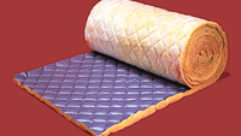

Behind the Acronym
In September, I managed to spend a day at International Broadcasting Conference (IBC), held at the sprawling and over-full RAI Center in Amsterdam, The Netherlands. In addition to the usual booths from the electronics giants ? Sony, Cisco, and Philips to name a few ?peddling cameras, editing gear, and other broadcast essentials, there were several stands and exhibits devoted to a pair of hot emerging technologies ?mobile digital TV, or DVB-H in Europe, and IPTV.
IN SEPTEMBER, I MANAGED TO SPEND A DAY AT THE International Broadcasting Conference (IBC), held at the sprawling and over-full RAI Center in Amsterdam, The Netherlands. In addition to the usual booths from the electronics giants — Sony, Cisco, and Philips to name a few —peddling cameras, editing gear, and other broadcast essentials, there were several stands and exhibits devoted to a pair of hot emerging technologies —mobile digital TV, or DVB-H in Europe, and IPTV.
In fact, there was one entire hallway of exhibits on IPTV with small booths manned by companies pushing software and hardware solutions to a market that is barely learning how to walk for the first time. As is so often the case these days, everyone is abuzz about technology that few really understand.
IPTV sounds like a whole new way to move video and audio from content provider to the home, but it really isn’t. For that matter, much of the infrastructure is already in use by terrestrial, cable, and satellite networks and broadcasters.
In the U.S., Verizon and AT&T are the only IPTV service providers in operation, and they are operating on a very limited basis. Verizon offers video through its FiOS service, but those channels aren’t presently delivered as true IPTV. AT&T is just finishing up preliminary tests on a pure IPTV delivery system —U-Verse. You’ve probably seen the ads for it on TV that show people simultaneously using cell phones, laptops, and TV sets to watch a football game.
Is it a pipe dream or science fiction? No, it really is possible to deliver standard-definition and high-definition TV to cell phones, PDAs, laptops, desktops, and TV sets, all at the same time, all using the same protocol — IPTV.
NUTS AND BOLTS
“IP” stands for Internet Protocol. It’s the same TCP/IP standard that allows you to go on the Internet, send and receive mail, and communicate with and control displays, audio equipment, and other AV gadgets from a Web browser.
In the IP world, every device connected to a wired or wireless network has a unique numerical address. Sometimes the address is set using a dynamic host control protocol (DHCP). Other times, it’s set manually and will never change. But that IP address is the key to making IPTV work.
In an IPTV system, digital video and audio are coded and decoded using a standard codec such as MPEG. In MPEG, intermixed streams of packets make up the elements of a TV program. The video travels with one set of numbers, the audio with another, and ancillary data, such as electronic program guide information, has yet another set of numbers.
MPEG program numbers are different than IP addresses. MPEGs refer to specific packets; IP addresses refer to specific pieces of hardware, such as a laptop, camera, or DVR. Both are needed to move content through an IPTV system.
MPEG program numbers are used for everything from DVDs to terrestrial broadcasts and follow a specific paradigm. Two tables that travel along with the stream of audio and video help to identify the packets. The first table is called the Program Association Table (PAT) and identifies all of the packet identifiers (PIDs) carried in the digital stream. Think of it as the “parts list.” The second table is the Program Map Table (PMT). This table specifies which video, audio, clock, and data packets are to be lumped together to create a “channel” or “show.” Think of it as the “assembly instructions.”
Behind the Acronym
In September, I managed to spend a day at International Broadcasting Conference (IBC), held at the sprawling and over-full RAI Center in Amsterdam, The Netherlands. In addition to the usual booths from the electronics giants ? Sony, Cisco, and Philips to name a few ?peddling cameras, editing gear, and other broadcast essentials, there were several stands and exhibits devoted to a pair of hot emerging technologies ?mobile digital TV, or DVB-H in Europe, and IPTV.
So, an HD broadcast of a football game might be identified as PID 48 in the PMT and consist of an HD video stream (PID 0 x 0041) and a Dolby Digital AC-3 audio soundtrack (PID 0 x 0044). The receiver picks off any packets using these PIDs and re-assembles them into an HD picture with 5.1-channel surround.
That’s exactly the system used to distribute digital TV via cable, satellite, or terrestrial connections. And IPTV isn’t limited these types of transmissions, as the only real issue is bandwidth. MPEG packets can be moved in other ways, such as over a fiber-optic connection or through fast and wide wireless nodes.
In both cases, the MPEG structure remains the same. But the receiver must have an IP address so that the content provider can deliver the programming. Of course, any device that can decode the MPEG packets and encode them to video and audio can also play back a TV show, which is why you see the simultaneous use of a cell phone, laptop, and HDTV in the AT&T commercials.
As so often the case, everyone is abuzz about the technology, that few really understand.
CABLE’S CONCERNS
Does your home cable TV provider bundle broadband and TV content through the same wire? With IPTV, you could dump the TV service and rely exclusively on the broadband connection, if it was fast enough (most aren’t).
That’s a scary thought to cable system operators. Comcast and Time Warner are fighting efforts by Verizon and AT&T to skirt time-intensive municipality-by-municipality franchise agreements and simply obtain a statewide franchise to begin wiring up and delivering their IPTV services.
As I mentioned earlier, Verizon isn’t delivering pure IPTV, yet. For now, its video services employ the same quadrature amplitude modulation (QAM) system used by cable companies. Eventually, it will shift to 100 percent IP addressing of MPEG packets. In contrast, AT&T’s system qualifies as true IPTV, but it is only rolling it out on a limited trial basis as of this writing.
Even so, the crowd of IPTV wannabes is getting bigger each month. At IBC, Motorola, Samsung, Thomson, Pace, and others showed IPTV set-top receivers. Many companies demonstrated customized electronic program guides, while others showed multiplatform encoding software and hardware to optimize viewing for both small and large screens.
Provided enough bandwidth is available, IPTV could replace many of the older video delivery systems we’ve come to know and love. It’s likely cable companies would eventually move to 100 percent IP distribution of TV content, if Verizon and AT&T are successful. Even DirecTV and Dish could soon be competing with terrestrial wireless delivery of broadband services.
You can be sure that where there’s fast broadband, IPTV is sure to follow.
Contributing editor Pete Putman is president of ROAM Consulting in Doylestown, Pa. You can reach him at [email protected].










